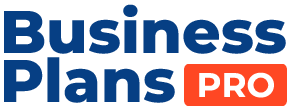General Contents of Business Plan
We Are The Best Professional Business Plan Consultant in Australia

Executive Summary: This is a summary which highlights the significant aspects of the Business Plan. Even though the topic appears first in the printed document, the tasks list leaves it until the end. This summary is the doorway to the rest of the plan.
Objectives: Outlines specific quantifiable goals and the specific results that the business aims to achieve. We keep the list between three to five points because long lists make it harder to focus.
Missions: The mission statement addresses the fundamental goals for the business. Such as, the business will offer customer satisfaction, employee welfare, compensation to owners etc Here are some examples of wording that can be used.
Keys to Success: Virtually every business has keys to success that make the difference between success and failure. For example:
- If you are a restaurant business, location and parking might be keys to your success;
For accountants and solicitors, your keys to success might include professional quality, reliability, and participation in community organisations. - Company Summary: This is used as a summary paragraph about the business. It also states where the business is located, how long it has been operating, what services it provides, to whom and so on.
Company Ownership: It describes the ownership and legal establishment of the company. It can also include details of the owners and officeholders of the entity.
Start-up Table & Start-up Summary: This area states the start-up expenses, Assets (Current and Non-Current), gives a general description of the total expenses. It describes how you intend to finance the projected expenses and where you will find, if necessary, the initial assets. This often means borrowing money and/or bringing in new investors.
Service Summary: It describes the services / product the business will offer, how they are provided and by whom, and plans for future growth and so on.
Market Analysis: This is the segment where you address the market trends and analyse the industry statistics for your business. It describes the different groups of target customers with explanations of why these selected groups are important. This topic always requires in-depth research of the industry you are in.
Market Segmentation: The segmentation concept is crucial to assessment and market strategy. This topic explains each segment of the market, defines the different classifications, and provides information regarding the customers within each market segment group.
Target Market Segment Strategy: This topic is used to introduce the strategy behind the choice of target markets.
Service Business Analysis: It explains the type of service industry you are in. It addresses the size and concentration of businesses in this group, the way services are bought and sold, and specific competitors.
Competition and Buying Patterns: It explains the general nature of competition in this industry and how the customers seem to choose one business over another. For example:
- In the restaurant business, competition might depend on reputation and trends in one part of the market and on location and parking in another;
- In many professional service practices, the nature of competition depends on word of mouth because advertising is not completely accepted.
Sales Strategy: It describes sales strategy as it differs from marketing strategy. Sales should close the deals that marketing opens. Sales strategies deal with how and when to:
- Close sales;
- Compensate salespeople;
- Optimise order processing and database management;
- Manoeuvre price, delivery, and conditions.
Sales forecast table: It will have the projected sales forecast for three years. It will also includes the Cost of Goods Sold (COGS) and the projected gross profit.
Competitive Edge: It covers areas like, what is your competitive edge? How is your company different from all others? Is there a sustainable value that you can maintain and develop over time?
Marketing Strategy Summary:The marketing strategy normally involves target market focus, emphasis on certain services or media, or ways to position the organisation and the service uniquely.
Management Summary: It summarises how many employees the company has, how many managers, and how many of the managers are founders. It also provides job descriptions and the essential responsibilities of the key members.
Personnel Plan: It details the assumptions, personnel needs, costs, and benefits listed in the Personnel table, which follows this topic in your printed plan.
Start-Up Funding table and Summary: The start-up funding table gives the details of the start-up estimates and the source of the funding. The start-up summary describes the start-Up Funding table. It explains where your funding will come from, as investments and/or loans, and how this funding will cover the start-up requirements outlined in the Start-up table.
Profit & Loss table: It gives a comprehensive calculation of the forecasted profit & loss of the business. Depending of the nature of the business, between twenty to thirty types of category transactions can be added into this area. In most cases, the projections are done for three consecutive years, however, if needed five years of projected profit & loss can be provided.
Explain Profit & Loss: It explains the important points of the profit & loss projections, such as percentage increase in sales and profits, your gross margins, and key budget items.
Break-even Analysis Table and Summary: A break-even analysis is a key part of any good business plan. The Break-even Analysis lets you determine what you need to sell, monthly or annually, to cover your costs of doing business.
Cash flow table & Summary: It measures the money flowing in and out of the business. We calculate the cash flow on a monthly basis rather than quarterly because it gives a clearer picture of your business.
Balance Sheet Table & Summary: A balance sheet in any business plays a significant role by summarising the business’s assets and liability. The balance sheet is critical to a growing business because it offers a snapshot, showing what the business owns (assets), what it owes (liabilities) and how much is represented by the owner’s investment (equity).
Financial Plan Summary: It gives an overview of various financial aspects of the business plan. It helps the reader to get an understanding of your current and future financial state by utilising various financial statements.
Business Ratios: This table provides a collection of standard business ratios you are most likely to need when you submit a plan to a bank or to investors or to DIBP. Some of the ratios that we will provide are: Current Ratio, Quick Ratio, Total Debt to Total Assets, Pre-tax Return on Net Worth, Pre-tax Return on Assets, Net Profit Margin, Return on Equity and so on.
Strategy and Implementation Summary: It summarises the organisational strategy for funding and reaching the people it needs to reach. It gives a snapshot of your intention with the business and the value you present to your stakeholders.
